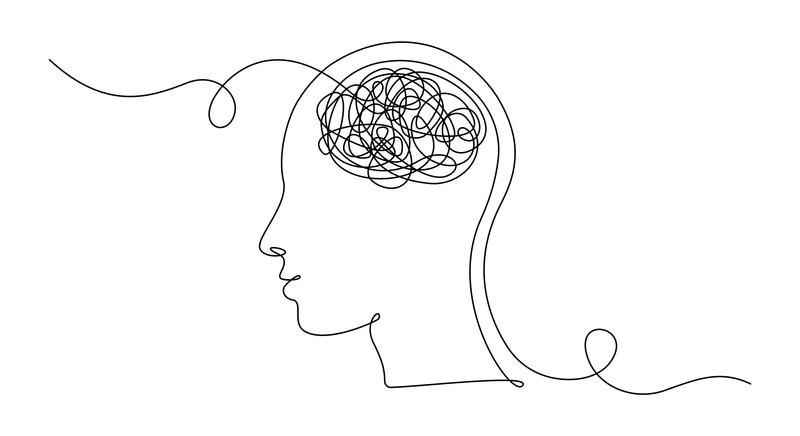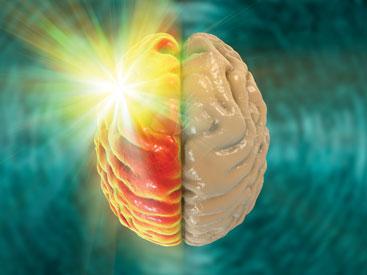
Pharmacological management of migraine
SIGN 155, February 2018
SIGN 155, February 2018
Migraine is the most common severe form of primary headache, affecting one in seven people, and it is a significant cause of disability. It is estimated to cost the UK around £3bn a year in terms of healthcare, lost productivity and disability. This guideline provides recommendations based on current evidence for best practice in the prophylactic management of adults with migraine using pharmacological therapies. It includes management of acute migraine and preventative treatment in patients with episodic or chronic migraine, and medication-overuse headache.
Note: this guideline is being updated in the light of updated evidence about treatments
Migraine is often underdiagnosed, misdiagnosed and undertreated in both primary and secondary care. In recent years there have been advances in diagnosis, and there are new therapies on the horizon for both acute and preventative treatment. A number of devices are also available for the treatment of migraine that could potentially avoid the need for medication.Patients may have different perspectives on healthcare outcomes from those of healthcare professionals. Common concerns include:
- Quality of life issues such as coping with pain, sleep disturbance, restriction on daily activities – education, working and social life – and the impact migraine has on the family
- Concerns around side effects of pharmacological therapies, medication overuse and feeling dependent on prophylactic therapies
- The need for clear information on the use of preventer medication.
DEFINITIONS
Migraine is subdivided into migraine with and without aura. It is defined as episodic or chronic.
Episodic migraine occurs on less than 15 days per month, subdivided into low frequency (1–9 days a month) and high frequency (10–14 days a month).
Chronic migraine occurs on 15 or more days a month.
Medication-overuse headache (MOH) is headache on 15 or more days a month that has evolved with the frequent use of medication for more than 3 months.
INITIAL CONSULTATION
- Exclude a serious cause for headache by appropriate history and examination.
- Make a diagnosis if possible (most patients with disabling headache will have migraine)
- Consider if the headache/migraine is episodic (15 days a month)
- Provide appropriate information leaflets or web addresses on migraine and its treatment, potential side-effects and MOH
- Ask the patient to complete a migraine diary. This may include:
– all headaches and their severity
– medication taken
– menstruation
– normal activities missed
Additional information:
– food and drink
– sleep times
– exercise
– stressful days
– complementary therapies used
- Ask what medication and doses the patient has tried so far.
- Consider acute and prophylactic treatment where appropriate
- If appropriate, explain to the patient that they have a primary headache called migraine.
Follow up after 2 weeks to consolidate the first consultation, and then again after 6–8 weeks to review migraine diary, discuss lifestyle improvements, review medication and any changes needed. Review of current medication should include dose, side effects and headache recurrence if it occurs after initial acute treatment. Consider whether referral is needed, e.g. because of treatment failure or uncertain diagnosis.
PHARMACOTHERAPY
Medical treatment is divided into acute and preventative.
Acute treatment should be taken as early as possible in the headache phase with the aim of aborting an attack. It is given one, with the option of repeating after 2 hours if there is inadequate response.
Preventative treatment is taken continuously to reduce the frequency and severity of migraine attacks.
Often a combination of acute and preventative treatment is needed.
Choice of treatment should take into account:
- Severity and frequency of attacks
- Other symptoms
- Patient preference
- History of treatment, and
- Comorbid conditions
Patients have a variable response to triptans, so it is worth sequencing through the triptans to find the most effective treatment. When starting a preventative treatment, start with a low dose and increase gradually. Use the minimum effective dose, which may vary between patients, and review the need for ongoing prophylaxis after 6 – 12 months.
ACUTE TREATMENT
First-line treatments
- Aspirin 900mg. Aspirin alone has a similar efficacy to sumatriptan 50mg, and reduces associated symptoms of nausea, vomiting, photophobia and phonophobia. It should not be used in patients under 16 years of age due to the risk of Reye’s syndrome. Aspirin (especially intermittent high doses) should be avoided during pregnancy, and it is contraindicated in the third trimester
- Ibuprofen 400mg. If ineffective, the dose can be increased to 600mg. In pregnancy, ibuprofen is the anti-inflammatory agent of choice until week 28, after which repeated use should be avoided.
- Triptans. First choice is sumatriptan (50–100mg) but offer others if sumatriptan fails. Sumatriptan is the preferred triptan based on efficacy, safety profile and cost. For patients with early vomiting, nasal zolmitriptan or subcutaneous sumatriptan are effective. Sumatriptan can be considered in pregnancy when paracetamol (all trimesters) or ibuprofen (first and second trimester only) fail. None of the triptans are classed as non-teratogenic.
- Combination therapy, using sumatriptan 50–85mg and naproxen 500mg
Paracetamol is not recommended as first-line treatment but can be considered for patients with acute migraine who are unable to take other acute therapies. Its safety profile makes it the first choice for the short-term relief of mild to moderate headache in pregnancy (all trimesters).
The numbers needed to treat (NNT) for acute migraine therapies for an outcome of pain free at two hours in patients with moderate to severe pain, versus placebo, are shown in the table below.
Acute migraine therapies: numbers needed to treat | |
|---|---|
Therapy | NNT |
Simple analgesics | |
Aspirin 900mg or 1000mg | 8.1 |
Diclofenac 50mg | 8.9 |
Ibuprofen 400mg | 7.2 |
Ibuprofen 200mg | 9.7 |
Naproxen 500mg or 825mg | 11 |
Paracetamol 1000mg | 12 |
Oral triptans | |
Sumatriptan 50mg | 6.1 |
Sumatriptan 100mg | 4.7 |
Zolmitriptan 5mg | 4.8 |
Zolmitriptan 2.5mg | 5.0 |
Nasal sprays | |
Sumaptriptan 20mg | 4.7 |
Zolmitriptan 5mg | 3.0 |
Subcutaneous injection | |
Sumatriptan 6mg | 2.3 |
Combination therapy | |
Sumatriptan 50–85mg plus naproxen 500mg | 4.9 |
ANTIEMETICS
- Metoclompramide 10mg or prochloperazine 10mg should be considered for patients with migraine-associated symptoms of nausea or vomiting. They can be used either as an oral or parenteral formulation, depending on presentation and setting.
Metoclompramide should not be used regularly due to the risk of extrapyramidal side effects such as tremor, slurred speech, dystonia, anxiety and distress.
PREVENTION OF MIGRAINE
Migraine can have considerable impact on quality of life and daily function. Modest improvements in the frequency or severity of migraine headaches may provide considerable benefits to an individual. In clinical trials, a reduction in severity and/or frequency of 30–50% is regarded as a successful outcome. The decision to start migraine prophylaxis is best guided by establishing the impact of migraine on the patient, rather than the absolute number of headaches or migraines per month. Prophylactic treatment should be used for at least 3 months at the maximum tolerated dose before deciding whether or not it is effective. In many patients, prophylaxis can be successfully phased out again, and the need for ongoing prophylaxis should be reviewed after 6-12 months.
First line prophylactic treatments
- Propranolol 80–160mg daily is recommended first-line.
- Topiramate 50–100mg daily for episodic or chronic migraine
- Amitriptyline 25–150mg at night
- Candesartan 16mg daily
- Sodium valproate 400–1,500mg daily (Prescribers should be aware of MHRA guidance prohibiting the use of sodium valproate in women of childbearing age unless they have a pregnancy prevention programme in place – See https://www.gov.uk/guidance/valproate-use-by-women-and-girls).
- Botulinum toxin A is recommended (by both SIGN1 and NICE2) for the prophylactic treatment of patients with chronic migraine where medication overuse has been addressed (see below) and patients have been appropriately treated with three or more migraine prophylactic treatments.
Patients using rizatriptan and propranolol should be given a maximum dose of 5mg rizatriptan due to the risk of interactions, and rizatriptan should bot be taken within 2 hours of taking propranolol.
Menstrual migraine prophylaxis
The drop in oestrogen just prior to menstruation is a known migraine trigger, and in women, migraine is more frequent, more severe and harder to treat just before and during menstruation. In some women, migraine only occurs (menstrual migraine) or predominantly occurs (menstrually-related migraine) from 2 days before the start of bleeding until 3 days after. In these women, perimenstrual strategies may be used instead of, or in addition to standard, continuous prophylaxis. The menstrual cycle has to be regular for this approach to treatment to be effective.
MEDICATION-OVERUSE HEADACHE
Most medication-overuse headache is a complication of migraine. Frequent use of acute medications for migraine increase the frequency and intensity of headache. The treatment becomes the cause, rather than the cure, and a vicious cycle of increased medication use and increasing headache ensues. Withdrawing the overused medication can reduce the headache frequency and intensity again, although can be associated at first with transient worsening of symptoms.
While it is clear that medication overuse should be addressed, there is no clear evidence for the best strategy for withdrawal, so this should be tailored to the individual patient. Strategies include:
- Abrupt withdrawal alone and preventative treatment may then be considered after a delay
- Abrupt withdrawal and immediately starting preventative treatment
- Starting a preventative treatment without withdrawal.
- Consider withdrawing regular opioids gradually
- Do not routinely use prednisolone in the management of patients with MOH.
DEVICES FOR MIGRAINE THERAPY
Devices may offer an alternative or an addition to pharmacological therapies, but the evidence for their efficacy and safety is extremely limited. Such devices include vagus nerve stimulation, transcutaneous nerve stimulation and transcranial magnetic stimulation.
References
1. Scottish Intercollegiate Guidelines Network. SIGN 155 Pharmacological management of migraine, February 2018. https://www.sign.ac.uk/our-guidelines/pharmacological-management-of-migraine/
2. NICE TA260. Botulinum toxin type A for the prevention of headaches in adults with chronic migraine, 2012. https://www.nice.org.uk/guidance/ta260
Related guidelines
View all Guidelines
